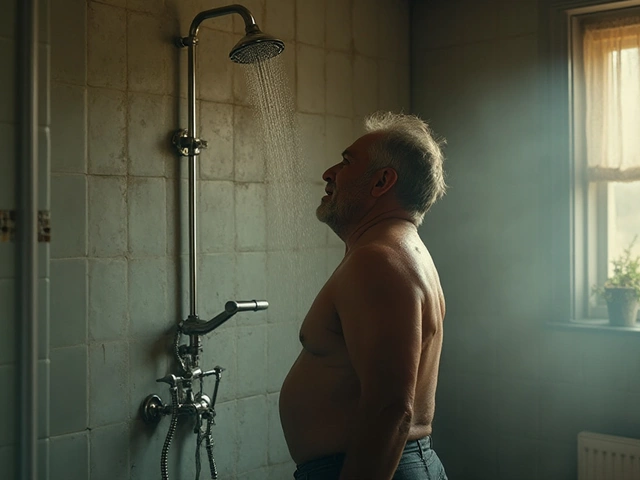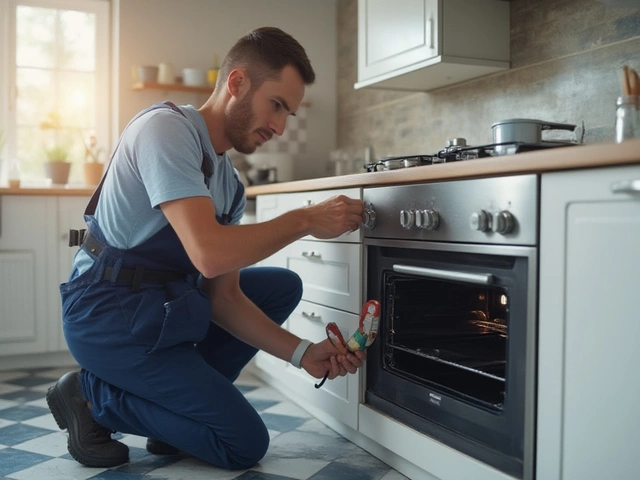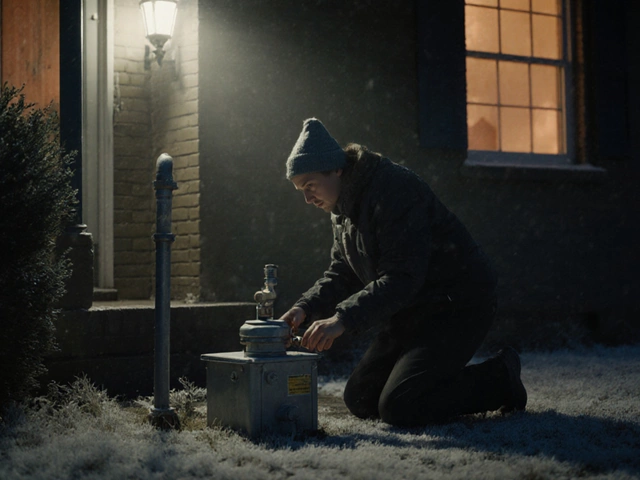We've all been there—standing under the shower, waiting for warmth, only to be greeted by an icy reality. If you find yourself constantly resetting your water heater just to get a few minutes of hot water, it's frustrating, right? But before you call out for help, let’s take a closer look at a few common culprits that might be causing your warm water woes.
First up, let’s consider the thermostat. Just like how you adjust your air con, your water heater's thermostat regulates the temperature. If it’s faulty or set incorrectly, you might be shivering unintentionally. Sometimes, it just needs a bit of a nudge to the right setting to keep everything cozy.
- Common Reasons for Water Heater Resets
- Thermostat Troubles
- The Issue with Electrical or Gas Supply
- Sediment Buildup Challenge
- Pressure and Temperature Relief Valve
- When to Call a Professional
Common Reasons for Water Heater Resets
If you’re sick of dashing between the utility room and your bathroom, fiddling with that reset button, you're not alone. Plenty of folks find themselves wrestling with their water heaters, and it often boils down to a few usual suspects.
One biggie is the water heater thermostat. The thermostat is supposed to keep things heating at just the right level. If it's not working right, it might trip the reset for safety, which leaves you high and dry. Make sure it’s set correctly—around 120°F or 49°C is usually the sweet spot.
Another common issue is sediment buildup. Over time, minerals from hard water can create a layer on the bottom of your tank, insulating the water from the heating elements. This can lead to overheating, causing the switch to trip. Flushing the tank regularly can help manage this common headache.
Electrical issues might also be at play. Loose wires or faulty connections can mess with the power supply, causing the water heater to reset. It might not be something you can tackle on your own, but keeping an eye out for signs of damage or corrosion can guide you in the right direction when discussing with a pro.
Finally, let's not forget about those high-tech features like the pressure and temperature relief valve. If this starts malfunctioning, it could send your unit into a tizzy. It’s supposed to release pressure for safety reasons, but if it’s stuck, that’s a problem.
Understanding why your water heater acts up might save you a few cold showers and prevent small issues from turning into expensive fixes. Plus, it’s always nice to know what you’re talking about if you do need to call in the cavalry for help!
Thermostat Troubles
Alright, let’s chat about the pesky thermostat on your water heater. This little device is supposed to regulate your water's temperature, but when it's on the fritz, you're left with either ice-cold showers or scalding water—neither of which is fun. A malfunction in the thermostat often means it isn’t reading the water temperature correctly, causing your heater to cut off too soon or not at all.
If your water heater just isn't heating like it used to, one of the first things you should do is check the thermostat settings. They're typically set between 120°F and 140°F for household use. Anything outside of this range could mean it's set wrong or needs replacing.
Here's a quick way to check:
- Turn off the power to your water heater—safety first!
- Remove the access panel and locate the dial—a screwdriver and a flashlight might help here.
- Use a thermometer to test a cup of hot water from the tap; this gives you an idea of what temperature your water is actually reaching.
- If it's way off from the dial setting, it might be time for a replacement or a recalibration.
Remember, fiddling with a thermostat is best left to those who feel comfortable with a bit of home electrical work. If you're not sure what you're doing, it might be time to call a pro. They can also check the wiring connections, since frayed or loose wires can also mess with your thermostat's ability to regulate heat properly.
The Issue with Electrical or Gas Supply
When your water heater starts playing up, pointing fingers at the electrical or gas supply might be spot on. Think of it as your heater’s lifeblood. If there’s a hiccup here, warm showers might be a rare luxury.
First, if you've got an electric water heater, the issue might be as simple as a tripped circuit breaker. Head to your electrical panel and check if the water heater's switch is off. A quick flip back might resolve the issue. If it keeps tripping, though, that could signal a larger electrical problem needing professional eyes.
For those running on gas, ensure that the gas valve is open. Sometimes, household hustle might accidentally switch the valve. Also, a pilot light that refuses to stay lit is quite the nemesis. If re-lighting it becomes your favorite pastime, there might be a problem with the thermocouple or the burner. This is when calling a pro isn’t a bad idea.
Keep in mind, both electric and gas heaters need regular check-ups. Even minor electrical issues, like a loose wire connection, can cut off your hot water faster than a faulty heater. So tap into that DIY spirit for quick fixes, but don’t shy away from ringing up an expert when things seem complex.

Sediment Buildup Challenge
So, you're constantly fiddling with your water heater, but ever thought about what's lurking inside the tank? Yep, I'm talking about sediment buildup, a sneaky issue that's more common than you'd think.
When water gets heated, minerals like calcium and magnesium can separate and settle down at the bottom of the tank. Over time, this sediment acts like a blanket, making your water heater work overtime just to get the water toasty. Not only does this affect the amount of hot water you’re getting, but it also puts a serious dent in energy efficiency.
"Maintaining your water heater is crucial. Ignoring regular flushing can lead to sediment buildup, causing poor performance and energy inefficiency," says Mike Stevens, a known electrician from Adelaide.
Now you're probably wondering what you can do about it. Well, good news! The solution involves just a bit of regular maintenance:
- Turn off the water heater and the cold water supply.
- Attach a hose to the tank's drain valve.
- Run the other end of the hose to a safe place where sediment can flow out.
- Open the drain valve and allow water to flow out until clear.
- Close the valve, remove the hose, open the cold water supply, and turn the heater back on.
Flushing the tank once a year can prevent many water heater headaches. It’s a small effort that can save you from lots of hassle down the line. Plus, it keeps your gadget running efficiently, which is kinder on your wallet when those utility bills come around.
Still unsure if it's worth it? According to an informal study, sediment buildup can lead to a 10% increase in energy use just to heat the water, which adds up over time. So, a little bit of TLC for your heater can go a long way!
Pressure and Temperature Relief Valve
Here's a bit of trivia: did you know your water heater has a backup plan when things get too hot or too pressurized? That's right, it’s the unsung hero known as the pressure and temperature relief valve. This little gadget kicks in when your tank's pressure or temperature goes beyond its comfort zone, preventing damage or even explosions. Imagine it as the trusty escape hatch in an action movie!
So, what could go wrong? Sometimes, the valve itself becomes faulty. It might get stuck or start leaking, causing more headaches than it prevents. When this happens, your water heater might cut off the hot water to stay on the safe side. Not fun, especially on a chilly morning.
Want to check it out yourself? You can give the valve a quick inspection. Here’s a simple way to do it:
- Switch off your water heater and let it cool for safety.
- Locate the valve, which is usually on the top or side of the tank.
- Have a bucket ready to catch any water, then gently lift the valve lever and let water flow for a few seconds.
- If water flows easily and stops when you let go, it’s likely in good shape. If it doesn’t, or if you see leaks around the valve, it might need a replacement.
Remember, if you’re not confident tackling this on your own, it’s completely okay to call in a pro. Better safe than sorry, right?
A good maintenance habit is to check the valve annually. Keeping this in mind helps you avoid unexpected hot water issues and extends the life of your appliance. Staying on top of it means less time fussing with resets and more time enjoying that warm shower bliss!
When to Call a Professional
So you've tinkered around with the basics, but your water heater is still acting up. When is it time to hit the panic button and get a professional involved? Knowing the signs can save you from expensive repairs down the line.
First off, if you're dealing with electrical or gas supply issues, it's better to leave it to the experts. These systems can be tricky and potentially dangerous if you don't know what you're doing. If you've noticed any strange smells or sounds, this could indicate a serious underlying problem.
Another red flag is repeated trips of the reset button. A one-time press might just be bad luck, but if you find yourself doing it every other day, there’s likely a bigger issue at play. It could be anything from a faulty heating element to something more complex like a wiring problem.
If you've spotted leaks around the unit, immediate professional help is a must. Water and electricity don’t mix, plus, leaks can lead to further damage and water bills higher than your heating preferences.
- If your hot water has a persistent rusty tint, or there's an odd taste to it, these aren’t just inconveniences—they could indicate a tank corrosion problem that needs urgent attention.
- Struggling with water temperatures that fluctuate wildly? You might think it’s just mood swings, but this can signal serious thermostat or sediment issues that need professional diagnosis and repair.
Lastly, if your water heater is over a decade old and constantly needs your TLC, it might be time to say goodbye and consider a replacement. A seasoned pro can guide you through the process and help you choose the right model for your needs.
Regular maintenance and knowing when to seek help can keep your water heater in top shape. While a bit of DIY can get you far, leave the tough stuff to those trained for tricky fixes.







